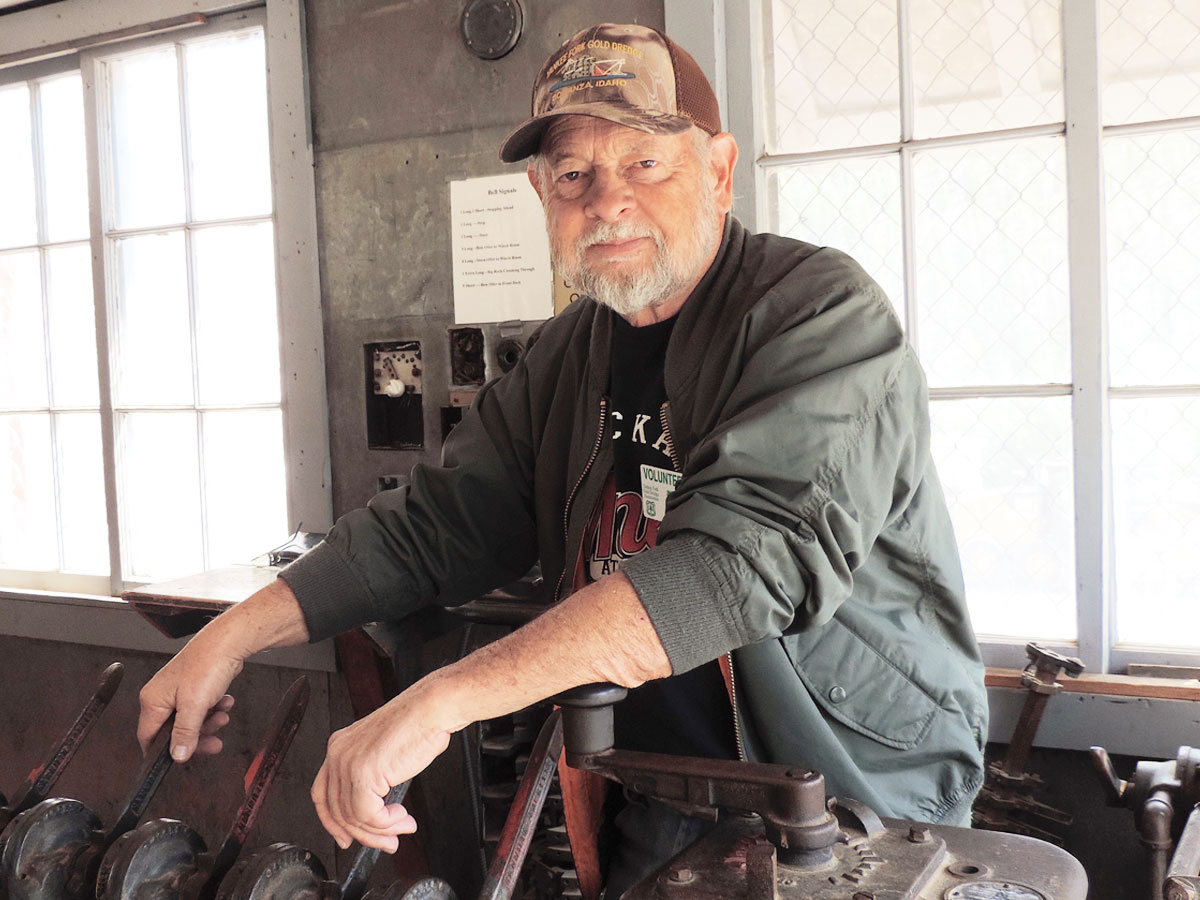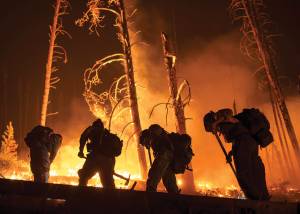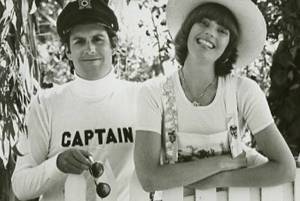by DIANNA TROYER
Resembling a plump ark stranded in a mountain pond, the historic Yankee Fork Gold Dredge in central Idaho is among the best-preserved gold dredges in the continental United States and a five-star rated destination on Trip Advisor.
Every summer, it not only lures visitors from throughout the nation but also devoted volunteers whose relatives were linked to its construction and its ultimate preservation as a historic site.
Mackay residents and volunteers Bill Lindburg and his sister, Peggy Vaden, are fascinated and drawn to the dredge 22 miles east of Stanley—like their Uncle Roland Lindburg was.
Roland helped deliver the dredge to the Yankee Fork of the Salmon River, named for a former Yankee soldier who was among the early gold prospectors there.
Recognizing its historical significance, Roland was a founding member of the Yankee Fork Gold Dredge Association in 1979. Members restored the dredge and maintain it. Always a cherished destination for Roland, he often vacationed in the scenic mountainous forests near the dredge. He passed away in 2000.
As first-time dredge volunteers last summer—answering visitors’ questions on self-guided tours—Lindburg and Vaden said they gained a new appreciation for the contributions their uncle Roland made to its construction and preservation.
Roland, along with his father, and brothers hauled most of the 988-ton dredge in 60 loads from Mackay to the Yankee Fork, where it was assembled from May to August 1940. Mackay was the nearest train depot for shipping pieces of the dredge.
Lindburg said he was impressed with the ingenuity and perseverance needed to deliver it.
“They had no cranes,” he said. “They used jacks, rollers, pry bars, horses, and their own manpower to transfer those heavy loads from the train onto their trucks. They never seemed overwhelmed. To them, it was just another job they had to figure out how to do. People in that era had a tremendous work ethic.”
A 71-year-old retired airplane and jet mechanic with an appreciation for engineering, Lindburg said, “You think of those who designed and built the dredge with no computers—just pencil, paper, and a slide rule.”
Roland wrote about the formidable job of delivering the dredge in his book, My Early Life in the Lost River Valley, available at Amazon.
He was 25 when he and his dad and brothers—who ran Lindburg Trucking Company—hauled it from the railroad station in Mackay to the Yankee Fork. They traveled a slow, arduous route—about 170 miles round-trip—along steep, narrow Spar Canyon Road north of town.
You think of them driving trucks built in the late 1930s, hauling all that freight and wonder how they did it,” said Vaden.
Harrowing delivery
Roland wondered a few times, too. He wrote about the harrowing delivery of one of the heaviest loads—the spud. It was a nickname for a giant spike—3 feet square and 35 feet long. The solid 17.5-ton spud anchored the dredge in place while gold-laden gravel was scooped from the riverbed and processed inside the dredge.
In Mackay, townspeople turned out to watch the Lindburgs unload the spud from three flatbed rail cars and onto a customized trailer Roland had built. To be able to navigate tight turns, they placed two 12-inch-square, 8-foot long timbers crosswise—one on the truck and the other on the trailer.
“Spectators were betting I wouldn’t make it out of town at two right-angle turns,” Roland wrote. “It pivoted on the timbers as we thought it would. I swung real wide on both turns and was on the highway.”
He left his load there until 7 p.m., preferring to drive during the cool night, to avoid overheating the brakes. By midnight, they had reached the top of Spar Canyon but still were not halfway there.
Shortly after sunrise, they stopped for breakfast in Clayton, erroneously thinking the most dangerous part of their journey was behind them.
At 9 a.m., Roland was near his destination, halfway up the Yankee Fork Hill, when he realized he had lost traction.
“We were stuck,” Roland wrote. “I kept from rolling back by running the engine and standing on the brakes as hard as I could while my helper found big rocks to block all the wheels. It seemed forever before he had them blocked.”
Roland’s father had left Mackay that morning in a car to accompany them. Luckily, their four-wheel-drive truck was parked nearby from an earlier trip.
“Dad walked to get it, and with the two trucks pulling together we made it up the hill,” Roland wrote.
Mailing gold bars
When the dredge was assembled, it stretched 112 feet long, was 54 feet wide, and stood 64 feet high. Employees aboard the floating boat scooped up gravel, ran it through tumblers, and processed it with mercury to reveal gold and silver. The precious metals were melted into bars on site.
The bars—about the size of house bricks—weighed 34 to 48 pounds. They were wrapped in paper and tossed in the official company vehicle—a 1949 brown Chevy pickup truck. When the mail truck was scheduled at the Sunbeam Post Office five miles away, the dredge master drove there to mail the bars, uninsured, to the U.S. Mint in Denver.
Vaden, who works in the dredge gift shop, said she imagines what it was like when the dredge was working.
“It was so noisy that people in the dredge camp a mile away could hear it,” she said. “They said they got used to the sound as background noise and didn’t notice it until it quit. Then they knew something went wrong.”
Her husband, Gordon, also a volunteer, said he was amazed at the dredge’s safety record.
“No one got hurt during its construction and operation,” Gordon said. “I was amazed, too, they were so trusting that no one would steal the gold bars, but at the time only the government was permitted to own large gold reserves.”
Dredge employees worked a 5-1/2-mile claim along the river. When it closed in 1952, $1 million worth of gold and $14,000 in silver had been mined.
Its final owner, agri-business magnate J.R. Simplot, donated it to the U.S. Forest Service in 1966.
Lindburg said every time he walks around and explores the dredge, he learns something new about it.
“We’re all glad we volunteered,” Lindburg said. “We’ll be ready to do it again next summer.” ISI
The dredge’s story is told in detail at yankeeforkdredge.com.









